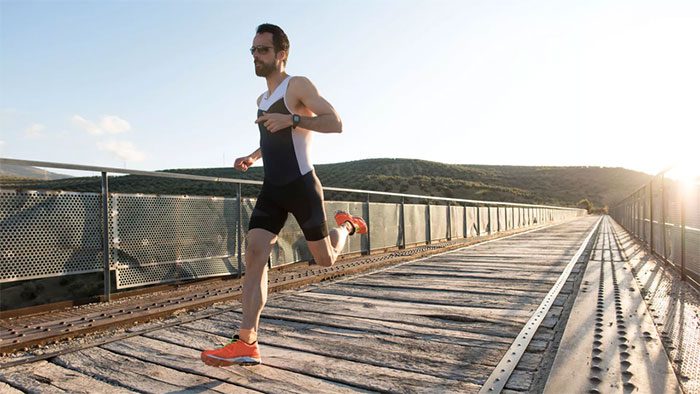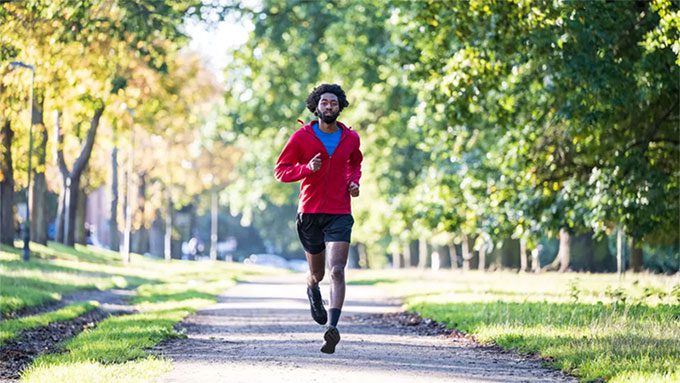From sprinting to long-distance running, the body uses a lot of energy. This is why runners often feel fatigued during their runs.
The frequency of foot strikes and the angle of the foot can not only improve running efficiency but also help prevent injuries.
90% of Running Injuries

Approximately 50% of all running-related injuries occur in the knee.
According to scientists, the frequency of foot strikes and foot angle is referred to as “cadence.” This term indicates the running pace, commonly considered as the number of steps taken per minute.
Currently, many of the best watches can track this metric. About 56% of runners, and up to 90% of athletes training for a marathon, will experience running-related injuries each year.
About 50% of all running-related injuries occur in the knee, with nearly half of those related to the patellar joint. Although some risk factors for injuries have been proposed, the inability of the joints in the lower limbs to fully control body load in the initial position is often identified as a focal point for injury prevention strategies.
To reduce the load on the lower limb joints during running responses, several common strategies have been suggested, including minimalist footwear and changes in running form.
A common outcome from these various strategies is increased step frequency. By increasing a person’s step frequency by 10% or more (with stride length decreasing proportionally under the assumption of constant speed), the impact load on the body reduces partly due to the lower vertical center of mass (COM) upon landing.
As a result, the joints in the lower limbs need to exert less force, with the most significant effect observed at the knee.
But what is the best running cadence? And can someone change their running cadence? Scientists have investigated this issue. Running cadence refers to the number of times a person’s foot strikes the ground in a minute.
It is also known as foot turnover, step frequency, or step rate. This metric is measured for both the left and right foot. In contrast, a stride is calculated on one side and refers to the length of a step.
John Mercer, a professor of biomechanics and nutrition at the University of Nevada, states: “Running cadence is really just the frequency at which we contact the ground with our feet.” A lower metric means someone is taking fewer steps per minute (spm). Conversely, a higher metric indicates more frequent steps.
Running cadence can also affect stride length. In a 2014 study published in the Journal of Sports Science, participants increased their running cadence by 10%. Scientists observed that this subsequently reduced the participants’ stride length.
Reducing Injury Risk by Increasing Cadence

A high running cadence is crucial for both sprinting and distance running.
Scientists have long studied the best running techniques to minimize energy and oxygen consumption. A key aspect is understanding the impact of cadence while running.
Professor Mercer explains: “From a physiological perspective, cadence tells us what is happening internally and how to become the most efficient and fastest runner.”
A high running cadence is essential for both sprinting and distance running. You aim to manage the impact you are creating with each stride while running long distances. At the same time, try to operate within this optimal range to use the least amount of energy to cover that distance.
Typically, sprinters may rely on longer strides along with a high cadence. In contrast, endurance runners are often advised to maintain shorter strides but with a higher cadence. This helps avoid landing with the foot too far in front of the hips or knees.
This practice is also known as overstriding. Overstriding can put more stress on the joints and subsequently increase the risk of injury. “We tend to land on our heels more when employing a low cadence and longer strides,” says Professor Mercer.
A study published in 2011 in the Journal of Medicine and Science in Sports and Exercise showed that increasing cadence reduced the impact load on the lower body.
The researchers concluded that lower impact loads could mean a reduced risk of overuse injuries at the knees for runners. According to Professor Mercer, everyone has a natural cadence.
Although it is difficult to change one’s running cadence, it is possible. In most cases, if someone intends to modify their cadence, they will likely need to increase it rather than decrease it.
The commonly cited optimal running cadence is 180 spm. This figure is based on a study conducted on Olympic distance runners.
This study was published in “Daniels’ Running Formula” (Human Kinetics, 2005). Meanwhile, a study on 20 elite runners competing in a 100km road race, published in the Journal of Applied Physiology, also found an average cadence of 182 spm.
However, there is significant variation among competitors, ranging from 155 to 203 spm. Faster speeds are linked to higher step frequencies. According to a 2015 study published in the Journal of Experimental Biology, distance runners in races tend to maintain a cadence of 170 to 180 spm. Recreational runners tend to fluctuate between 156 to 170 spm.


















































